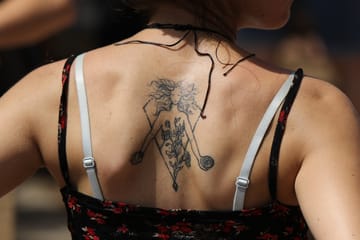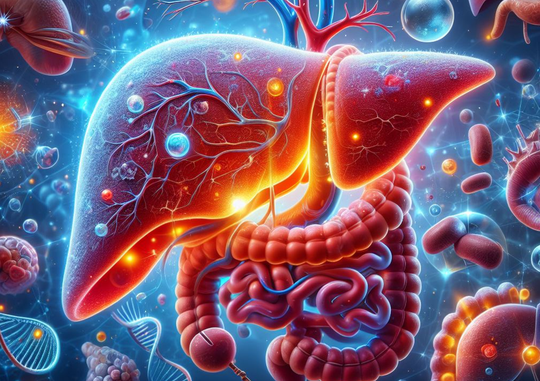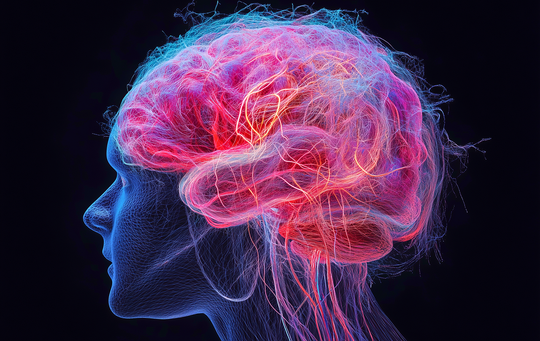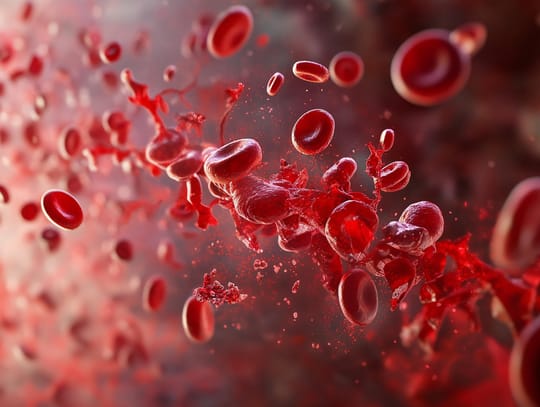Restless legs syndrome is an irresistible urge that people have to move their legs. Often, that urge exists even though they're resting at that time. There's often an ache or craving to move, in the same way you may crave that cup of coffee in the morning if you're addicted, or that cigarette!
Naturally, people don't like restless legs syndrome because it can come at inconvenient times. Imagine, for instance, having restless legs syndrome at 1 AM at night - you'd have a much harder time falling asleep!
So in this article, I'll explore five different reasons to use red light therapy for restless legs syndrome. There aren't any direct studies on red light therapy for restless leg syndrome, and hence, I'll have to look at a few plausible biological mechanisms described in the scientific literature!
Let's begin with the basics below, though. And if you're short on time, just stick to the summary below:
Restless legs syndrome is mostly an issue later in the evening and at night, where people have a propensity to move against their will. There are many underlying reasons for restless legs syndrome, such as dysfunction in the dopamine system in the brain (related to abstract thought and motivation), inflammation, genetics, mineral imbalances, depression, and poor sleep. Restless legs also leads to poor sleep in itself because you're active when you want to rest.
No direct studies on red light therapy and restless legs syndrome exist. However, red light therapy likely affects many of the underlying mechanisms plagueing people with the condition, such as inflammation, depression and anxiety, poor sleep, relaxation, sleep quality, and blood sugar control. Red light therapy is worth a try because standard medical treatment with pharmaceuticals may be paired with side effects.
Other lifestyle and nutrition intervention I mention are ensuring adequate iron and magnesium levels in your body, using other strategies to improve sleep quality, destressing, and exercising. For the best results, it's probably smart to use trial and error with several lifestyle and nutritional interventions first.
What Is Restless Leg Syndrome?
Night times are generally the worst for people with restless legs syndrome (1). Often, a clear cause cannot be stipulated, although restless legs syndrome is associated with kidney problems and iron deficiency (1). Genetics can also play a role.
The most plausible reason people have restless legs syndrome is because of dopamine dysfunction in their bodies (1). Dopamine is involved in exploration, motivation, and abstract thought. Dopamine is strongly tied to what makes us humans in terms of our evolutionary past.
Restless legs syndrome can go from bad to worse. Here's what a recent study writes about that worsening process, which is called "augmentation":
"Augmentation is characterized by more intense symptom severity, earlier symptom occurrence, and often, symptom spread from the legs to the arms or other body regions. Some people with [Restless Legs Syndrome] have adequate symptom control with non-pharmacological measures such as massage or temperate baths. First-line management options include iron-replacement therapy in those with evidence for reduced body-iron stores or, alternatively, with prescribed gabapentin or pregabalin, and dopamine agonists such as pramipexole, ropinirole, and rotigotine. Second-line therapies include intravenous iron infusion in those who are intolerant of oral iron and/or those having augmentation with intense, severe [Restless Legs Syndrome] symptoms, and opioids including tramadol, oxycodone, and methadone. [Restless Legs Syndrome] significantly impacts patients' quality of life and remains a therapeutic area sorely in need of innovation and a further pipeline of new, biologically informed therapies."
About 4-7% of people worldwide have restless legs syndrome (2; 4)! Poorer areas are more likely to be affected (2).
You're far from defenseless against restless legs syndrome, however! Smoking increases your risk of the condition by 46% (2). Depression - which can be countered through many natural means - increases risk by 71% (2). Diabetes, which can be reversed in many studies early on in as little as eight weeks, increases restless legs syndrome risk by 54% (2). Those numbers already give a clue of where I'm going with my argument, as some of these factors can also be influenced by red light therapy!
Chronic inflammation is another significant factor for restless legs syndrome (5). The same is true for rheumatoid diseases and anxiety (6; 7). And, antidepressant use may increase the risk as well (8)!
Different types of restless legs syndrome exist, however (3). And these different types need slightly different treatment. Some people have restless symptoms that don't start in their leg area but in others. I'll focus mainly on the former here, however!
The big problem with restless legs syndrome is that it leads to a vicious cycle. The syndrome impedes sleep quality, which then impedes general health. And, there isn't always an easy fix once people have the condition. Sleep problems also make the condition worse, and make your health worse in terms of the risk factors - depression, anxiety, diabetes, and chronic inflammation. So once you're in the cycle, it may be harder to get out!
So let's talk about the most common restless legs syndrome treatments:
Current Restless Leg Syndrome Treatment Options
Pharmaceutical treatment is generally the first line of defense for restless legs syndrome (9; 10). In some cases, the condition may be alleviated by other means, such as fixing iron deficiency anemia - but most people in the developed world aren't affected by that!
The most common medications used that work on the dopamine system, are anticonvulsants, or opioids, or benzos for relaxation (9). There are lots of alternatives, however, which are described in a recent review on medication for restless legs syndrome:
"Alternative pharmacological agents include clonidine which reduces adrenergic transmission, adenosinergic agents such as dipyridamole, glutamate AMPA receptor blocking agents such as perampanel, glutamate NMDA receptor blocking agents such as amantadine and ketamine, various anticonvulsants (carbamazepine/oxcarbazepine, lamotrigine, topiramate, valproic acid, levetiracetam), anti-inflammatory agents such as steroids, as well as cannabis. Bupropion is also a good choice for the treatment of co-existent depression in RLS because of its pro-dopaminergic properties" (9)
That viewpoint should give you a basic indication of how restless legs is generally treated. Some medications are preferable because they don't cause the condition to deteriorate over time (10). The problem with dopamine-based medicines, for instance, is that it tends to cause augmentation - making things worse potentially (11).
(Nevertheless, I don't give medical advice here - talk to your doctor for medication regarding restless legs syndrome and treatment in general! This blog is for educational purposes only!)
Many people want other non-pharmaceutical solutions, however. And if you want a pharmaceutical solution, I recommend talking to your doctor. For others who may want to try red light therapy, check my suggestions below:
5 Reasons To Try Red Light Therapy For Restless Leg Syndrome
Below, I'll describe five different reasons why red light therapy for restless legs syndrome is likely a great strategy.
Why?
Well, red light therapy greatly affects many of the risk factors for restless legs syndrome! Let's explore these risk factors one by one:
1) Counters Depression And Anxiety
Red light therapy has a strong effect on both depression and anxiety. Many review have been written on this topic in the last few years (12; 13; 14; 15; 16; 17). I've written a few articles on this topic in the past as well:
- Red Light Therapy For Upgrading Your Brain Health
- Red Light Therapy For Depression: A Potential Solution
- Does Vielight Work? A Close Look At The Spectacular Vielight Science
In some studies, just one session of light therapy can already have a significant effect on depression! This is because of differences in gene expression (parts of the gene that are activated or not) and transcription factors, which have long-term effects after the light stimulus is gone.
Most of the research currently focuses on transmitting light through the skull, on the prefrontal cortex (the front of your head above the eyes), and through the nose. Check out some of the following videos by Alex Fergus - the founder of this website - if you're interested, related to brain red light therapy devices:
And this video:
You probably know whether you've got depression or anxiety issues! If you've got these issues and also restless legs problems, it's time to focus on this domain! Also, you may have a light deficiency in your life because you may always be indoors. In that case, I also highly recommend upgrading the light exposure in your life - even with basic sunlight, which works wonderfully - to counter depression and anxiety!
Here are the results of a recent 2024 review that summarizes and integrates earlier evidence:
"Subgroup analysis showed that s-PBM was superior to t-PBM in relieving symptoms of depression. The best improvement for t-PBM was achieved using a wavelength of 823 nm, fluence of 10-100 J/cm2, irradiance of 50-100 mW/cm2, irradiance time of 30 min, treatment frequency < 3/week, and number of treatments >15 times. The best improvement for s-PBM was achieved using a wavelength of 808 nm, fluence ≤1 J/cm2, irradiance of 50-100 mW/cm2, irradiance time ≤ 5 min, treatment frequency ≥ 3/week, number of treatments >15 times." (14).
S-PBM here means systemic red light therapy or "photobiomodulation". T-PBM stands for light therapy through the skull, such as the products I've listed above! In plain English, you'll want full body treatments to reap the greatest benefits for countering depression and anxiety!
Next up:
2) Lowers (Systemic) Inflammation
Inflammation is a huge problem in many chronic health conditions. Whether it's diabetes, neurodegenerative disease, or heart and blood vessel issues, inflammation plays a major role.
But guess what?
Red light therapy has a powerful effect on the systemic inflammation levels of your body - normalizing your levels over time (18; 19; 20). By reducing inflammation, your general disease risk goes down.
But remember that excessive inflammation levels are also a risk factor for restless legs syndrome. The same is true for those of older age. And here, once again, you can see a similar pattern: chronic inflammation levels tend to go up with age. Few teenagers have problems with excess inflammation, but the risk increases once you hit your 50s or 70s.
Fortunately, red light therapy brings these inflammation levels down. As a result, energy production in the body increases, and there's more energy available for healing processes. And hence, inflammation is likely a mechanism by which restless leg syndrome can be impeded!
3) Improves Sleep Quality
Yes, missing a few nights of sleep is horrible. But, what if you had that problem continuously because of restless legs syndrome? And what if the poor sleep quality increases your risk of restless legs syndrome once again?
You'll need to break that vicious cycle!
I've written an article on red light therapy and sleep quality. In that article, I consider the four extant studies published on red light therapy and sleep quality that are available (21; 22; 23; 24).
What can you expect here? Well, first of all, there are mood improvements and enhancements in daytime alertness. Red light therapy also has benefits for the circadian rhythm and be especially useful in areas in the northern latitude where there are very dark and cold winters.
One study using the NovoTHOR red light therapy bed also showed a decrease in required sleep for elite soccer players, and yet, quicker recovery in resting heart rate and variability - hinting at faster recovery! In other words, increased sleep quality caused decreased sleep quantity.
If you're curious about the NovoTHOR, check this video below:
Other studies also show enhancements in deep and REM sleep in individuals with cognitive decline. One study with female basketball players in the Chinese military shows improvements in sleep quality, melatonin levels, and a boost in endurance while running (24)!
What does this outcome have to do with restless legs syndrome? Well, people with restless legs already sleep poorly, and poor sleep increases the risk of restless legs syndrome!
If you can break that vicious cycle, you've got an enormous advantage. You'll also have higher sleep quality with red light therapy applied, even if you sleep for a shorter period due to restless leg syndrome.
So it's a win-win! And, thereby, I've found another likely mechanism by which red light therapy helps people with restless legs!
Next up:
4) Helps You Relax
If you've ever used red light therapy, you may have noticed it helps you relax. At least, it does for me! And, for many others, although the experience isn't universal.
Many different mechanisms exist for the relaxing effect of red light therapy. The decrease in inflammation I've talked about earlier, as well as the increase in energy production are among them.
Many different mechanisms exist for the relaxing effect of red light therapy. One mechanism is that red light therapy affects the "Nitric Oxide" system in your blood vessels, causing vasodilation - the relaxation and expansion of blood vessels. This is similar to what you would be experiencing in a sauna under the influence of heat.
In plain English, blood flow improves! As a result, blood flow improves as well, and nutrient delivery is enhanced, as well as detoxification and the removal of waste products. Also, because of the increase in energy production, it's easier to regulate stress responses, and you'll have more of a calming effect in the body.
And, simply because of the benefits of sleep quality and melatonin (the darkness hormone), you'll also be less stressed during the day. This benefit isn't hard to understand. Nevertheless, it's often hard for people with restless legs syndrome to relax precisely because the symptoms appear at the worst moments of the day - the evening and nighttime!
Lastly, there's one more benefit:
5) Enhances Blood Sugar Control
Remember that diabetes increases restless leg syndrome risk dramatically. And yet, light therapy can give a massive boost to your ability to control blood glucose!
A very recent 2024 study just shone 670 nm red light at the upper back of study participants (25). These participants then had much lower peak blood glucose levels. Here's what the researchers wrote on their experiment:
"A 15 min exposure to 670 nm light reduced the degree of blood glucose elevation following glucose intake by 27.7%, integrated over 2 h after the glucose challenge. Maximum glucose spiking was reduced by 7.5%. Consequently, PBM with 670 nm light can be used to reduce blood glucose spikes following meals. This intervention may reduce damaging fluctuations of blood glucose on the body." (25)
This outcome is auspicious, although more research is needed in this area! Many other studies also show benefits for countering diabetes and insulin resistance (the inability of your cells to uptake blood sugar in the presence of insulin) with light therapy (26; 27; 28; 29; 30).
You'll have to combine light therapy with exercise for the best results. More human studies are needed here as well. For now, however, I can recommend red light therapy as a tool to help your blood sugar levels.
The moral of this section? Even though no studies that directly investigate the link between light therapy and restless leg syndrome exist, there are many plausible biological mechanisms through which light therapy can help. I hope the examples listed above - of countering depression and anxiety, sleep quality, inflammation, relaxation and blood sugar control - convince you to try light therapy for restless leg syndrome!
Next up:
How To Use Red Light Therapy For Restless Leg Syndrome?
For the best results, I recommend using red light therapy for restless leg syndrome in a more systemic approach. Not only have the studies above demonstrated that the systemic approach is best for depression and anxiety, the same is also true for many of the sleep quality benefits studies.
For you that means that a bigger red light therapy setup that hits a more significant percentage of your skin is arguably the best for countering restless legs syndrome. Of course, price will be a problem for many people when they're looking at a red light therapy panel setup.
So I've got three main options for you, from decent to good to great. First up, a decent option is a budget tabletop red light therapy panel that you can view here:
Next up, the wall panels that are compared in the videos below are excellent for treating more significant areas of the body:
And, lastly, below, you'll find body panels that are great for complete body treatment and the best option out there - for restless legs syndrome:
I know these products are pricey, so go for a tabletop panel if you're short on money. But if you can afford a body panel, that's almost certainly the best investment into countering restless legs and aiding your overall health!
Please follow the instructions of these panels for dosing. red light therapy dosing for more information on why I can't give you black-and-white guidelines that every person should follow!
Lastly, let's consider a few other options as well:
5 More Lifestyle Adjustments Worth Trying
Lastly, I want to mention a few other strategies you can implement to counter restless legs syndrome. As almost always, the solution isn't just 100% light therapy for all your health problems - almost always, there are tons and tons of other lifestyle and nutrition strategies you can implement for better results:
Boost Iron Intake If You're Anemic
For decades now, iron deficiency has been one the main reasons identified as a cause for restless legs syndrome (31; 32; 33; 34; 35; 36; 37). There's no easy answer here, except that:
- Most people in developed nations should typically have an iron deficiency but are more prone to have an excess of iron stored in the body.
- The main two tests for iron deficiency and overload are your ferritin status, and transferrin saturation - although iron testing is complex. Read my article on the Alex Fergus website on iron lab testing for more info!
- If you are deficient, the first goal should be to increase your numbers with iron-rich food and supplements. Foods such as red meat which has a really highly absorbable iron content, and organ meats can help a lot. If you don't want to eat that food, take organ meat supplements.
- Supplementing with iron is unnecessary if you haven't tested your iron levels. Supplementing with iron and increasing already high iron levels can negatively affect your health!
- Iron blood testing is cheap and widely available across the world. So there's no reason not to test before you supplement or massively increase your iron intake through diet.
- If you do have iron deficiency anemia, fixing your iron levels can help your restless legs syndrome!
- There may be other reasons, however, in addition to your iron status as to why you have restless legs syndrome. So fixing iron alone isn't always the complete solution!
- Don't use intravenous iron supplementation unless you really have to! Intravenous iron supplementation can lead to other imbalances such as copper or zinc status problems, because you're supplementing with an isolated mineral (iron), that's usually always paired with other minerals in nature!
Easy peasy! Next:
Upgrade Your Magnesium Intake
There's loads and loads of science linking restless legs syndrome to magnesium deficiency and improvements in the condition with magnesium supplementation (38; 39; 40; 41; 42; 43; 44).
Magnesium is the ultimate anti-stress and pro-relaxation mineral. However, an estimated 50% of people are deficient and arguably 75% of people in modern society have suboptimal levels.
You need magnesium for 1,000+ biochemical processes in the body, however, for deep quality sleep, keeping your stress hormones in check, basic relaxation, and so forth. Soil mineral depletion is one of the main reasons people are deficient in this mineral. Hence, I recommend supplementing with magnesium glycinate or magnesium chloride - doing so is dirt cheap and will change your life for the better, generally!
I would undoubtedly fix your magnesium status before I would try fixing my iron levels - especially if you don't have an iron deficiency! From a cost and overall health perspective, very little can go wrong with magnesium supplementation if you keep your dose normal!
Some studies show no effect on restless legs syndrome from magnesium supplementation but because it's dirt cheap to try, I still recommend trial and error here (45; 46).
Deal With Chronic (Psychological) Stress
Restless legs syndrome is linked to psychological stress, to depression, anxiety, poor sleep quality, and to caffeine intake (47; 48; 49; 50; 51; 52). I don't have an easy answer here.
Simply put, you may have to do whatever is necessary to manage your stress levels. Whether that's meditation, or going on walks in the forest, meeting up with your friends, or using an infrared sauna, you'll have to do whatever it takes to get your stress levels down. I don't think there's a universal recommendation here.
Also, restless legs syndrome is linked to caffeine consumption - my personal guilty pleasure! So, if you've got this condition, you may want to cut down on your intake or eliminate caffeine for some time to observe what is happening - not all studies show this pattern, though, but it's worth trying!
Upgrade Your Sleep Hygiene
Yes, due to restless legs syndrome, it's harder to sleep. Hence, it only becomes more and more important to fix your sleep quality through other means! Whether it's ensuring bright light into your eyes in the early morning, wearing blue light-blocking glasses at night, or mouth taping to ensure you're breathing through your nose at night, many different strategies can help sleep quality.
Remember that restless legs syndrome sufferers often have a vicious cycle between poor sleep quality, more restless legs, and then poorer sleep quality. By adopting as many sleep hygiene tips as possible - such as sleep masks, avoiding noise pollution, opening your windows if you've got access to clean air or using an air purifier, etc - you can turn that vicious cycle into a virtuous one!
Get Regular Exercise
Exercise, especially in the evening, can reduce restless legs symptoms (53; 54; 55; 56; 57; 58). Depression and fatigue may also go down, which is a nice bonus! What's also interesting is that restless legs syndrome is associated with exercise intolerance - so being in poor physical condition.
Again, there is there is no black-and-white recommendation here, but this is generally an easy strategy to test. Again, there are almost no costs involved as you can simply walk or run for exercise, do some bodyweight exercises, etc! If you have restless legs syndrome, this test is worth trying.
The moral of this section? There may be more to restless legs syndrome than light therapy solutions alone! As is the case with almost any condition, there's a multifactorial picture of different risk factors and solutions that affect your disease risk. How you implement these changes is 100% up to you. But the more of these strategies you try and implement, the more likely you'll have a significant effect on your restless legs syndrome!
Finally, let's conclude:
Conclusion: Welcome To The Upgraded Restless Legs Syndrome Treatment!
Restless legs syndrome self-care has just gotten easier: use light therapy for many underlying conditions, as well as lifestyle and nutrition changes such as fixing your iron, magnesium, stress levels, exercise, and more!
So if people ask me "how to get rid of restless legs" or "what helps restless legs", there's no simple answer here! And, zooming out, I probably suspect that there are many other lifestyle and nutrition factors that few people have investigated before that play a significant role here!
I've also not discussed some factors before, such as a sizeable circadian rhythm component (59; 60; 61; 62). Let's not overcomplicate things further! You have plenty of tools in your toolbox to start and make changes! So try red light therapy for restless legs syndrome because it affects many underlying mechanisms!
Easy peasy!
And if all else fails, talk to your doctor for restless legs syndrome medication. Ask questions such as "what is the best over-the-counter medicine for restless leg syndrome", although, as always, I'd start with lifestyle and nutrition first. Because restless leg syndrome home treatments generally have the biggest bang for your buck!
This is a post by Bart Wolbers. Bart finished degrees in Physical Therapy (B), Philosophy (BA and MA), Philosophy of Science and Technology (MS - with distinction), and Clinical Health Science (MS), has had training in functional medicine, and is currently chief science writer at Lighttherapyinsiders.com
Found This Interesting? Then You Might Like:
- Start Here - Light Therapy 101 & Buyers Guide
- What Is Red Light Therapy?
- Discount Codes, Deals & Recommendations - Red Light Therapy
- Red Light Therapy Dosing Chart: The Raw Data From Hundreds Of Studies
- Red Light Therapy Dosing: Why It's Complicated!
- Red Light Therapy Wavelengths Benefits: The Ultimate Guide
- Red Light Therapy for Arthritis: The Complete Guide
- Red Light Therapy For Neuropathy: The Promising Science
- Does Red Light Therapy Work For Back Pain? The Interesting Answer!









